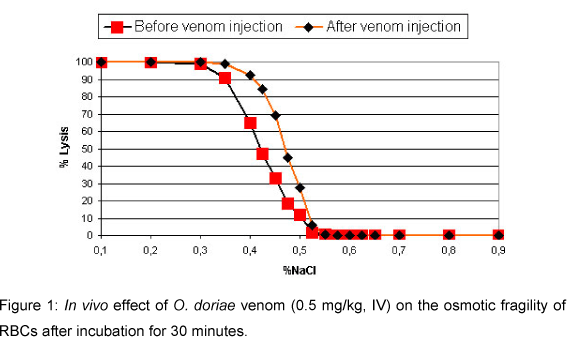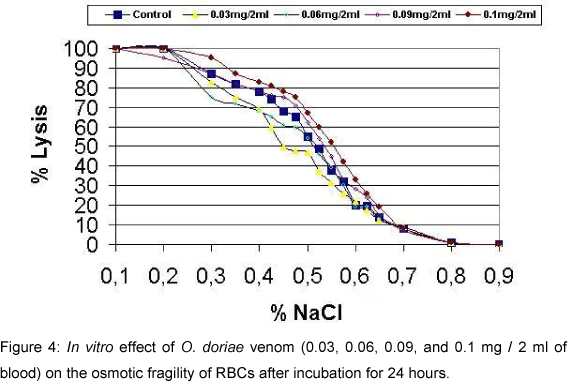Many toxins from scorpion venoms cause neurotransmitters release by activating the autonomic system. The aim of the present work was to determine osmotic fragility of red blood cells (RBCs) and serum biochemical changes produced by the venom of Odonthobuthus doriae (O. doriae), a dangerous species of scorpion in Iran. For this study we selected 2 groups, each one containing 10 New Zealand white rabbits weighing 2 ± 0.2 kg. In vivo and in vitro osmotic fragilities as well as packed cell volume (PCV) were determined. Serum was separated and used for determination of glucose, blood urea nitrogen (BUN), creatinine, uric acid (UA), triglycerides, cholesterol, aspartate aminotransferase (AST, EC 2.6.1.1), and alanine aminotransferase (ALT, EC 2.6.1.2). Results indicate that Odonthobuthus doriae venom (0.5 mg/kg, IV) causes a significant increase (p<0.05) of serum glucose, UA, PCV, ALT, and AST. Increase was also observed in BUN, but it was not statistically significant. On the other hand a significant decrease (p<0.05) was observed in triglycerides and cholesterol levels. Increased in vivo osmotic fragility of RBCs was significant too, but in vitro osmotic fragility did not show a significant change. These results support the hypothesis that the biochemical variation caused by scorpion venom can be due to an autonomic storm and release of catecholamines.
scorpion venom; Odonthobuthus doriae; biochemical changes; manifestation of envenomation; osmotic fragility of RBCs






